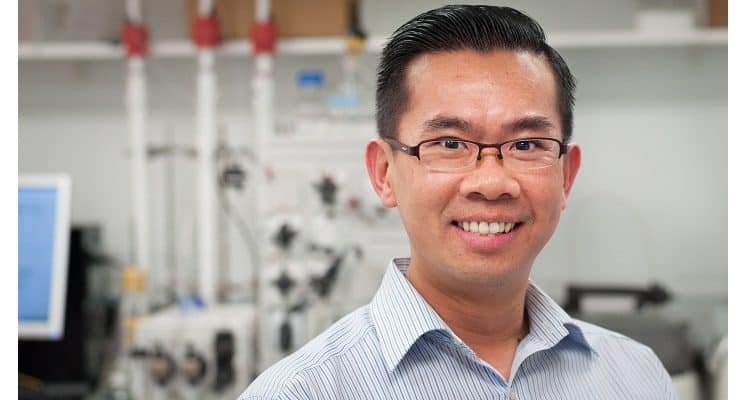How is a vaccine engineered?
Dr Tuck Seng Wong, Director of International Student Recruitment and Senior Lecturer, Department of Chemical and Biological Engineering, the University of Sheffield, UK Engineering points out that engineering a vaccine is a complex process. He also highlights that to ensure future medicine security it is vital to train next-generation engineers to support pharma manufacturing sector and encouraging more young people into STEM education
Vaccines are among the most effective means of preventing infectious diseases. Vaccines train our immune system to mount a defence against pathogens by creating antibodies. English physician Edward Jenner pioneered the smallpox vaccine that is widely regarded as the world’s first vaccine. Smallpox was once among the world’s deadliest diseases known to man, claiming an estimated 300 million lives in the 20th century. Smallpox raged through India in the mid-1970s, with over 100000 reported cases and at least 20000 deaths. Thanks to vaccination, smallpox was declared eradicated in 1980 by WHO. With COVID-19 now causing widespread disruption and plunging the global economy into the worst recession since World War II, we are once again racing against the clock to roll out mass vaccination. The positive impacts of vaccines are indisputable. We can view the benefits derived from vaccines through different lenses. The health impact is obvious, measured primarily through the reduction of morbidity and mortality. From an economic standpoint, vaccination leads to cost saving in healthcare and productivity gain, among others. Socially, vaccination improves life quality, restores social interaction, and prolongs life expectancy. Healthy individuals are key drivers of our economic and social growth.
At the start of the COVID outbreak in the UK, I led a downstream processing team to manufacture SARS-CoV-2 spike proteins for the Northern General Hospital and the Royal Hallamshire Hospital in Sheffield to develop a serological test for antibody. The SARS-CoV-2 virus is studded with the so-called spike proteins that it uses to enter the human cells. COVID-19 vaccines that have been approved in the UK and many other countries, such as the Pfizer-BioNTech vaccine, the Moderna vaccine and the Oxford-AstraZeneca vaccine, are all based on the virus’s genetic instruction for making these spike proteins or vaccine antigens. My lab in Sheffield focuses on engineering and manufacturing proteins for industrial and pharma applications, providing the basis for this commentary.
As we are vaccinating our way out of the COVID-19 crisis, I see the necessity to address the question ‘How is a vaccine engineered’. Why should we care? Two reasons. First, ramping up vaccine production is not a trivial task. It requires engineering inputs on multiple fronts, from vaccine design through to vaccine distribution. I salute all my fellow engineers who have contributed to vaccine manufacturing. These unsung heroes deserve to be celebrated for their contribution. Second, we must immediately embark on a journey to ensure future medicine security. Fundamental to this endeavour is training the next-generation engineers to support our pharma manufacturing sector and encouraging more young people into STEM education.
Engineering a vaccine goes far beyond just identifying the right antigen that triggers an immune response and the mechanism of presenting an antigen (the Pfizer-BioNTech vaccine and the Moderna vaccine use mRNA as the genetic instruction for the vaccine recipient’s own cells to produce the vaccine antigens). More often than not, adjuvants are added to a vaccine to boost the immune response to produce more antibodies and longer-lasting immunity, thereby minimising the dosage required. Stabilisers are used to help the vaccine maintain its efficacy during storage. Above all, one needs to consider the manufacturability of the vaccine, i.e., manufacturing with the lowest cost, the highest quality, and the quickest time to ensure stable and sustainable production. Quality control during vaccine manufacturing is integral to vaccine safety. Manufacturing is not complete until the vaccine is bottled into glass vials for cold storage and transport. Successful immunisation programmes are also built upon functional, end-to-end supply chain and logistics systems. Viruses such as SARS-CoV-2 are constantly mutating, presenting yet another challenge to engineers.
India is the world’s biggest vaccine maker, accounting for more than 60 per cent of all vaccines sold across the globe. The Oxford-AstraZeneca vaccine is also being manufactured locally by the Serum Institute of India, the world’s largest vaccine manufacturer. India’s leadership effort in COVID-19 vaccine manufacturing is widely praised. Having the world’s second-largest population with unmatched talents and culture, India is poised to become a powerhouse for both vaccine development and manufacturing provided STEM education is introduced at a much larger scale and the gender gap in STEM career is closed. Instead of producing a workforce to work in factories, Indian students need an engineering education that produces independent thinkers and innovators to take full advantage of India’s manufacturing capability.
At the University of Sheffield, we train our chemical engineering students at the interface of engineering and biology. With a curriculum designed to meet the industrial demands of the 21st century, our graduates tackle grand challenges to create a sustainable future for our society, such as the global health issue. We also offer specialist MSc Pharmaceutical Engineering programme to develop the knowledge and the skills our students need to stand out in the global pharma market.


